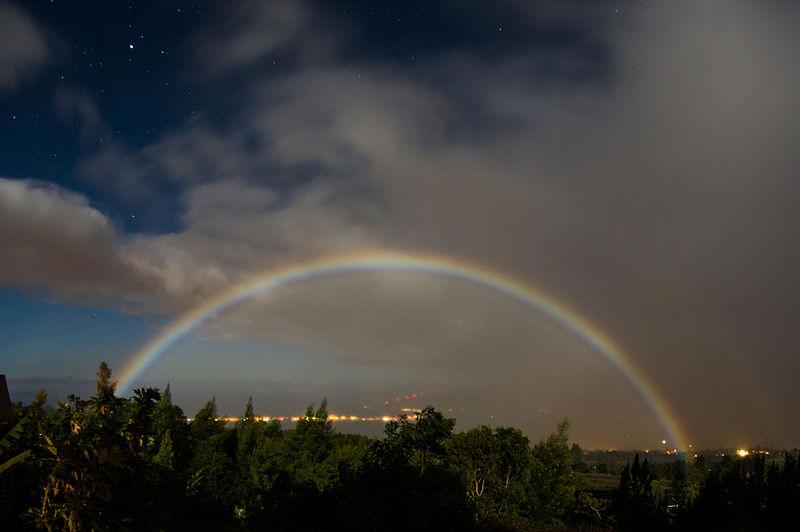Rare 'moonbow' photographed in night sky over Yorkshire
Phenomenon caused when light from the moon is refracted through raindrops

Your support helps us to tell the story
From reproductive rights to climate change to Big Tech, The Independent is on the ground when the story is developing. Whether it's investigating the financials of Elon Musk's pro-Trump PAC or producing our latest documentary, 'The A Word', which shines a light on the American women fighting for reproductive rights, we know how important it is to parse out the facts from the messaging.
At such a critical moment in US history, we need reporters on the ground. Your donation allows us to keep sending journalists to speak to both sides of the story.
The Independent is trusted by Americans across the entire political spectrum. And unlike many other quality news outlets, we choose not to lock Americans out of our reporting and analysis with paywalls. We believe quality journalism should be available to everyone, paid for by those who can afford it.
Your support makes all the difference.A rare ‘moonbow’ has been caught on camera in the skies over North Yorkshire.
The phenomenon – also known as a lunar rainbow – was captured on Monday evening on the moors between Skipton and Keighly.
Ben Gwynne took the images and posted them to his Facebook page. “I have never seen this before! A moonbow,” he wrote. “Very odd and very cool!”
The photographer had been out taking pictures of that evening’s supermoon when he came across the lunar rainbow.
Mr Gwynn told the BBC: "We'd gone into the Dales to take pictures and stopped on the way back to photograph the moon over some trees.”
"I'd never seen one before and getting to photograph it was amazing."
A supermoon occurs when a full moon coincides with it getting as close to Earth as possible. The result is a far brighter and vivid moon than normal.
Moonbows are rainbows produced by moonlight rather than sunlight.
The light is refracted by raindrops during a downpour and is always on the opposite part of the sky from the moon relative to the observer.
Join our commenting forum
Join thought-provoking conversations, follow other Independent readers and see their replies
Comments